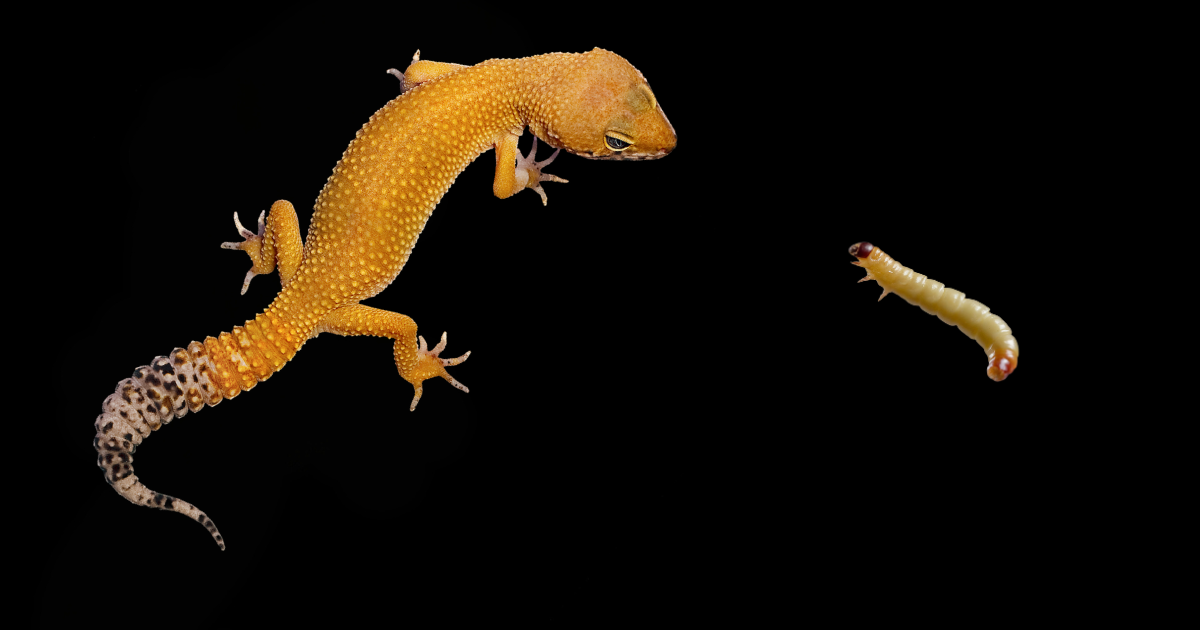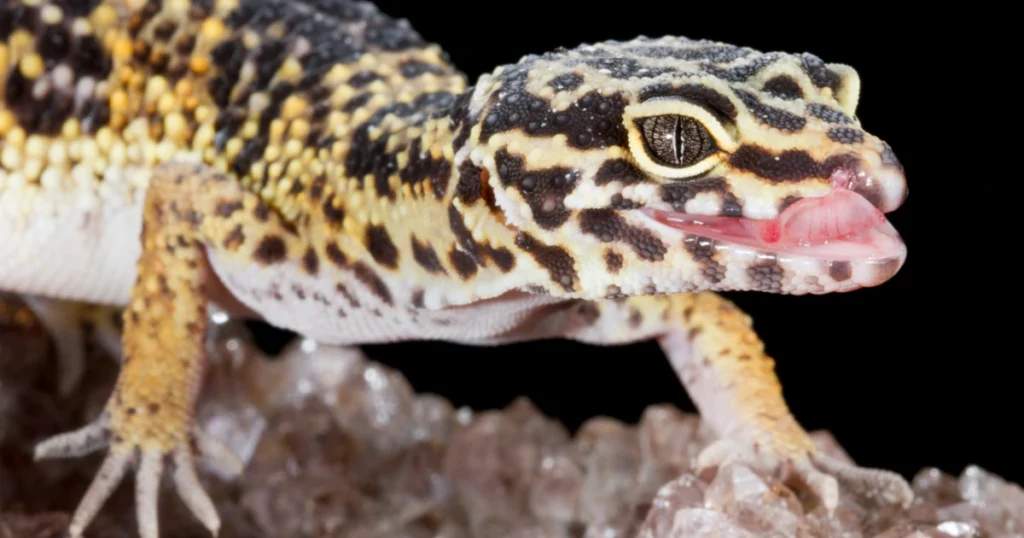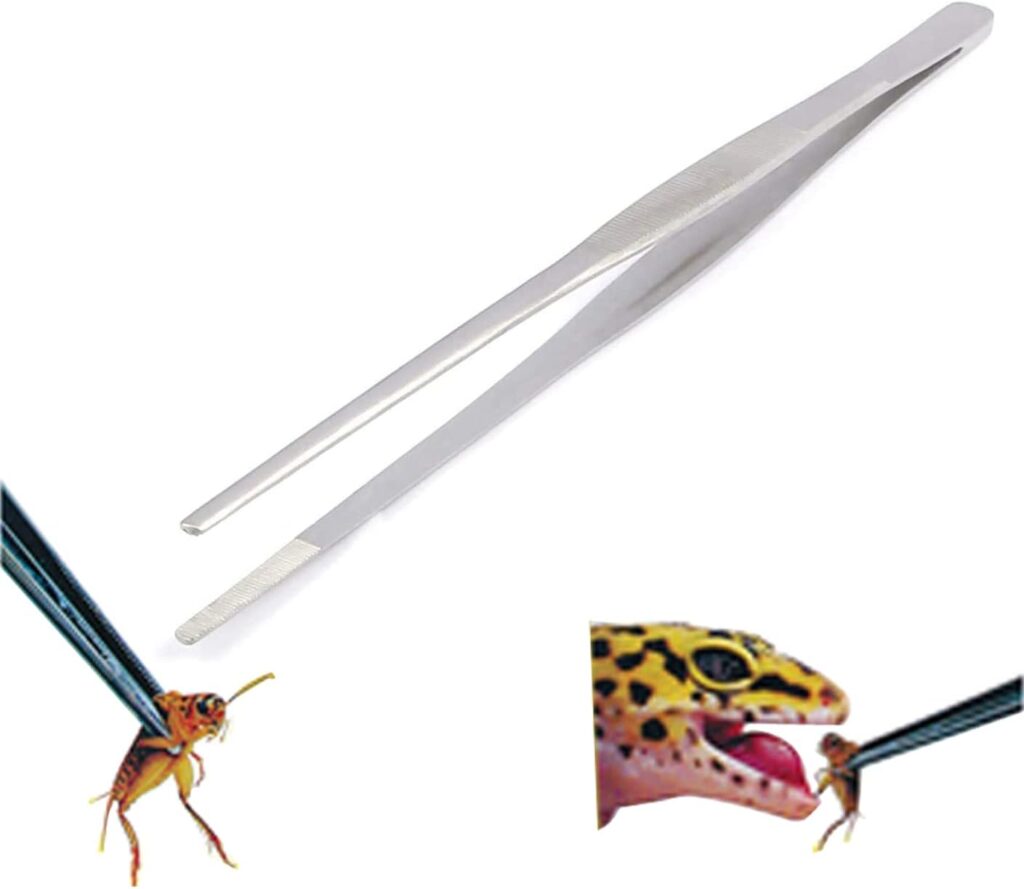
Hey there, fellow leopard gecko wax worms enthusiasts! It’s me, Chirag, your friendly neighborhood reptile expert. If you’re here, chances are you’re wondering about the dos and don’ts of feeding your scaly pal those irresistible little wrigglers known as wax worms for leopard geckos.
Trust me, I’ve been there – trying to figure out the best way to keep my leopard gecko happy and healthy while still treating them to the occasional wax worm snack. It can be a bit of a balancing act, but fear not! I’ve got your back with all the tips and tricks you need to make sure your leopard gecko wax worms experience is a roaring success.
Why Leopard Geckos Love Wax Worms
Let’s start with the obvious: wax worms are like the gourmet burger of the insect world for leopard geckos. These little wiggly morsels are packed with protein, fat, and other nutrients that our beloved reptiles simply can’t resist. It’s like offering a human a chocolate cake – they might know they shouldn’t indulge too often, but that doesn’t make it any less tempting.
But here’s the catch: wax worms are high in fat and should be treated as an occasional treat, not a staple diet. Overfeeding your leopard gecko wax worms can lead to obesity, impaction, and other health issues. That’s why it’s so important to understand the right way to incorporate these tasty snacks into your gecko’s diet.
How Often Can I Feed My Leopard Gecko Wax Worms?
One of the most common questions I get from fellow leopard gecko owners is, “How often can I feed my gecko wax worms?” And let me tell you, there’s no one-size-fits-all answer. The frequency will depend on a few factors, including:
- Your gecko’s age and size
- Their overall diet and primary feeder insects
- Their activity level and metabolism
As a general rule of thumb, most experts recommend limiting wax worm feedings to once or twice a week at most. For juvenile leopard geckos, you might want to stick to once a week or even once every two weeks. Adult geckos can usually handle wax worms a little more frequently, but moderation is still key.

Proper Portion Sizes for Leopard Gecko Wax Worms
Okay, so you’ve got the frequency down, but what about portion sizes? Here’s a simple guideline to follow:
- For juveniles and smaller adults, offer 2-3 wax worms per feeding.
- For larger adults, you can increase the portion to 4-5 wax worms.
Remember, these are just general guidelines. Pay close attention to your leopard gecko’s body condition and adjust the portions accordingly. If they start looking a little chunky, cut back on the wax worms and increase their exercise and activity levels.
Preparing Wax Worms for Your Leopard Gecko
Now that we’ve covered the when and how much, let’s talk about proper preparation. Believe it or not, there’s a right way and a wrong way to get those wax worms ready for your gecko’s dinner plate.
Purchasing Wax Worms
Your first step is to source high-quality wax worms from a reputable seller. I personally prefer to buy them from specialized reptile supply stores or online vendors, as they tend to have better quality control and fresher stock.
Gutloading Wax Worms
Before you feed those wax worms to your gecko, you’ll want to gut load them. This simply means giving the worms a nutritious meal themselves, which will increase their overall nutritional value for your pet.
You can gut load wax worms with a variety of foods, such as:
- Calcium-fortified cereal or oats
- Finely grated carrots or sweet potatoes
- Specialized gut load diets from reptile supply stores
Let the wax worms munch on their gut load for 24-48 hours before feeding them to your gecko.

Rehydrating Dried Wax Worms
If you’re using dried wax worms (which can be a more convenient and longer-lasting option), you’ll need to rehydrate them before serving. Simply place the desired amount of dried wax worms in a shallow dish with a moistened paper towel or piece of lettuce. Let them sit for 30 minutes to an hour, and they’ll plump up and regain their wiggly appeal.
Feeding Techniques for Leopard Gecko Wax Worms
Now comes the fun part – actually getting those wax worms into your leopard gecko’s belly! Here are a few tried-and-true feeding techniques:
Using Tongs or Feeding Dishes
Many gecko owners prefer to use tongs or specialized feeding dishes to present the wax worms to their pets. This helps prevent any accidental nips or bites and keeps the wax worms contained in one area.

Encouraging Hunting Behavior
Leopard geckos are natural hunters, so you might want to try tossing a few wax worms into their enclosure and letting them hunt and chase their prey. This can be a great way to stimulate their natural instincts and provide some much-needed exercise.
Avoiding Overfeeding
As tempting as it might be to keep offering those wriggly treats, it’s important to stick to the recommended portion sizes and frequencies. Overfeeding can lead to serious health issues, so be sure to remove any uneaten wax worms from the enclosure after feeding time is over.
Wax Worm Treats and Alternatives
While wax worms make a tasty treat, they shouldn’t be the only thing on your leopard gecko’s menu. A balanced diet is key to keeping your pet healthy and happy.
Offering Wax Worm Treats Occasionally
As we’ve discussed, wax worms should be offered as an occasional treat, not a staple food source. Stick to the recommended frequencies and portion sizes, and use them as a way to bond with your gecko and provide some variety in their diet.
Other Feeder Insects to Supplement Diet
So, what should make up the bulk of your leopard gecko’s diet? Crickets, mealworms, and dubia roaches are all excellent options that provide a well-rounded source of protein, vitamins, and minerals.
I personally like to rotate between these different feeder insects to keep things interesting for my geckos and ensure they’re getting a variety of nutrients.
Variety for a Balanced Diet
In addition to feeder insects, you’ll also want to make sure your leopard gecko is getting a source of calcium and other essential vitamins and minerals. This can be accomplished through supplementation or by offering calcium-rich foods like calcium-dusted crickets or small pieces of calcium-fortified gecko diet.
Remember, a varied and balanced diet is key to keeping your leopard gecko healthy and happy in the long run.

Safety Precautions for Feeding Leopard Gecko Wax Worms
While wax worms can be a tasty treat, there are a few safety precautions to keep in mind:
Potential Impaction Risks
One of the biggest concerns with feeding wax worms is the risk of impaction. Wax worms have a tough outer casing that can be difficult for leopard geckos to digest, potentially leading to a blockage in their digestive tract.
To minimize this risk, make sure your gecko is well-hydrated and has access to a shallow water dish at all times. You can also try offering wax worms that have been lightly misted with water or gutloaded with a high-moisture food item like cucumber or zucchini. The added hydration can help soften that outer casing and make them easier to pass.
Additionally, be extra cautious when feeding wax worms to young or underweight leopard geckos, as their smaller size puts them at higher risk for impaction issues.
Preventing Wax Worm Infestations
Another safety consideration is preventing wax worm infestations in your gecko’s enclosure. These little guys have a knack for burrowing and can quickly multiply if left unchecked.
To avoid any unwanted wax worm colonies, be sure to remove any uneaten worms from the enclosure after feeding time. You may also want to consider placing the wax worms in a shallow dish or on a piece of slate or tile, making it easier to monitor and collect any stragglers.
If you do happen to notice a few rogue wax worms taking up residence, don’t panic! A thorough deep clean of the enclosure, combined with a temporary relocation of your gecko, should help eliminate any lingering pests.
Proper Storage of Wax Worms
Finally, it’s important to store any leftover wax worms properly to maintain their quality and prevent potential health risks. Live wax worms should be kept in a breathable container with ample ventilation and a substrate like wheat bran or oat bran.
For longer-term storage, you may want to consider purchasing wax worms in their dried form. Dried wax worms can be kept in an airtight container in a cool, dry place for several months. Just be sure to rehydrate them properly before feeding, as we discussed earlier.
No matter which form you choose, be sure to check your wax worm supply regularly for any signs of mold, foul odors, or other contaminants, and discard any that appear compromised.
Frequently Asked Questions About Leopard Gecko Wax Worms
Even after covering all the basics, I know there are bound to be a few lingering questions about feeding leopard geckos wax worms. Let’s tackle some of the most common ones:
Wrapping Up: A Balanced Approach to Leopard Gecko Wax Worms
There you have it, folks – everything you need to know about incorporating those irresistible wax worms into your leopard gecko’s diet safely and responsibly.
Remember, the key is moderation and balance. While wax worms can be an occasional tasty treat, they shouldn’t be the main event. Focus on providing a varied diet with a rotation of high-quality feeder insects, supplemented with calcium and other essential nutrients.
And above all, pay close attention to your individual gecko’s response and adjust feeding schedules and portion sizes accordingly. Every reptile is unique, and their needs may vary slightly from the general guidelines.
With a little patience, some trial and error, and a whole lot of love, you’ll find the perfect balance that keeps your scaly pal happy, healthy, and well-fed – wax worms included!
So go forth, my fellow gecko enthusiasts, and embrace those wiggly treats with confidence. Your leopard gecko will thank you for it (probably with a few enthusiastic licks and tail wags).
As always, if you have any other burning questions or need personalized advice, feel free to reach out to me or consult with a qualified reptile veterinarian. We’re all in this together, working towards providing the best possible care for our beloved leopard geckos.
Happy feeding, and may the wax worms be ever in your favor!
